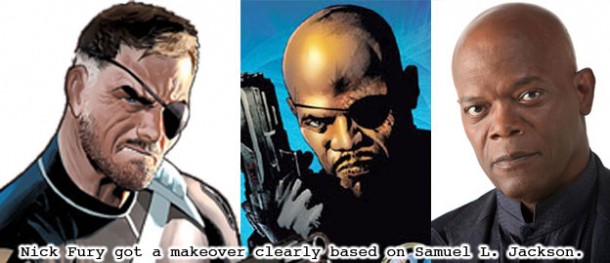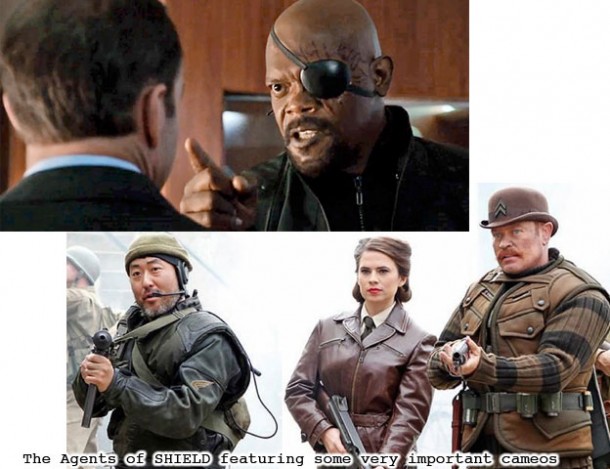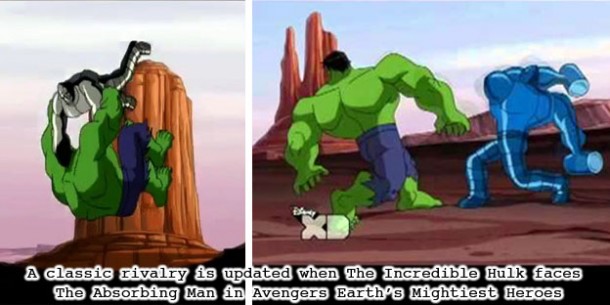Please give a warm MiceChat welcome to our newest contributor, Noe Valladolid. Noe is a Marvel and video game fan. Today begins his epic multi-part guide on the lore and backstory of The Agents of S.H.I.E.L.D.
Marvel Entertainment has been making a lot of waves in pop culture circles over the past decade. It started out as a small comic book company more than half a century ago but has suddenly become a cornerstone in the multi-billion dollar Disney empire. Those that were investors of The House of Mouse did not necessarily think that buying The House of Ideas was a solid plan. What did the two companies really have in common? One seemed to cater to families and the other seemed to focus exclusively on the whim of young males.
However, those were gross generalizations for both companies. Disney has animation fans, television fans, movie fans and theme park fans. They are, sometimes, mutually exclusive communities. Fans of one thing that the company produces do not necessarily like everything that they do. The same thing could actually be said for Marvel fans. There are fans of the comics, games, toys, television shows and films and they do not necessarily go together. Disney fans and Marvel fans come from every walk of life, they are from every age and background.
The companies have a lot in common, especially where audiences are concerned. Both Disney and Marvel have a library of characters beloved by several generations. Both were pioneers in the arts and pushed the boundaries of storytelling. Fans of each company are always eager to see something new and unique featuring their favorite icons. For modern audiences, nothing seems to be more important than having a great film and a follow-up television series. Other writers might point out how Once Upon A Time is doing wonders on ABC. Classic fairy tale heroes and villains have been given a new lease on life. Contemporary stars, like those from Frozen, have also been brought in to keep audiences hooked.
When it comes to television, Marvel is no slouch. Tuesday nights became a chance for Marvel fans to see how the universe was developing well after they had left the movie theater. Audiences may have wondered why Marvel and Disney were so adamant about producing a live-action television series based on S.H.I.E.L.D. in between the films. The reason was very straightforward. S.H.I.E.L.D. was a thread that ran through every film in the series with the exception of the Guardians of the Galaxy. Audiences were familiar with the organization and their connection to the major heroes and villains in continuity. Since none of the S.H.I.E.L.D. agents had special powers then it would be easier to produce. There has been a good use of special effects and even practical effects in the show but it is driven by characters rather than eye candy. These characters explain what is going on in the universe in between every movie.
This was something that the people at Warner Bros. and their DC counterpart couldn’t grasp. There had been several television shows featuring the DC characters produced over the past decade. Each show seemed to have no connection to any film or even the source material, starting with Smallville and moving through Arrow (which is a solid adaptation of The Green Arrow), Gotham and the Flash, the studio keeps having to remind fans that each show does not necessarily overlap into the continuity of the next show. None of the shows, moreover, have anything to do with any of the films being developed. So even if the Flash series turns out to be as big a hit as fans anticipate, the character and costume would be recast in any live action film. (In this case, with Ezra Miller in the film instead of Grant Gustin from the TV show) This sort of planning is completely opposite of what Marvel has been doing.
The live action Marvel shows and films are all connected, even making use of the hashtag #itsallconnected at the beginning of AoS’ new season. When there was a live-action license that could not be crossed over, say with the X-Men, Fantastic Four or Spider-Man, Marvel brings those characters in on animated shows. These cartoons would try to keep the continuity going by including versions of the S.H.I.E.L.D. characters as regulars. Disney hopes to bring back the rights to all of their franchises from the other studios such as Sony and Fox. It makes sense from a production standpoint for these characters to all appear under one umbrella. This may also be why Marvel announced a few weeks back that the X-Men would no longer have comic book support. It was seen by some as an effort to force them back into the stable, film-wise.
If Disney could do this they would secure tremendous financial success because they would have a solid template from which to work. There has been much more to the success of Marvel over the past few years than simply making movies based on comic book characters. Warner Bros. had tried many times and could only seem to get a hit with the Dark Knight Trilogy. Chris Nolan directed and co-wrote the series with David Goyer. It had a distinct tone that was gritty and very realistic. It was a certain sense of realism that helped make comic book adaptations work on the big screen.
Marvel was aware of this as well. Tony Stark had to be presented as an arrogant character that was humbled by the very weapons he created in order for Iron Man to be born. Steve Rogers showed that the heart of a hero was in the frame of a skinny kid from Brooklyn – a super-soldier serum gave Rogers his full potential as Captain America. Every character, whether from Marvel or DC seemed to work best when they did not deviate much from the comics. They had to be presented with the personality that made them unique and be given a challenge that respected their roots. When the films deviated from the comics, as with the Green Lantern or Superman Returns, audiences spoke with their wallets and stayed away. Yet it was not Chris Nolan that had created the genre of superhero retellings with a realistic tone, at least not for Marvel.
Mark Millar had created a unique spin on the Avengers in 2002. Artist Bryan Hitch helped bring Millar’s vision to life in a comic called The Ultimates. The two wanted to create a version of the Avengers as realistic as they could. How would people react if there were super heroes in the real world? Would they be feared or become rock stars? To help make the audiences accept this version of the universe they included cameos from real people. Then President George W. Bush was the president in the comics, celebrities Shannon Elizabeth and Freddie Prinze Junior knew of and hung out with the Avengers. Of course the most famous likeness that was used in the comics was that for S.H.I.E.L.D. Director Nick Fury.
In the comics Nick Fury had been a grizzled white veteran for decades but was suddenly “recast” as someone that looked a lot like Sam L. Jackson. It was no accident, the creators were heavy-handed when it came to telling Hollywood who would be a perfect fit for a movie. The casting people seemed oblivious to comic book characters anyhow. They were looking to fill each and every role with the biggest names their budget would allow. It didn’t matter if the actor was right for the role at all. The panels that Hitch put together read more like a storyboard than a traditional comic book. Audiences that read the Ultimates were essentially seeing how a big-budget live action feature would appear if done right. Of course it was assumed that a live action movie of this caliber would cost too much to produce and also never see the light of day. The best the fans could do was read and imagine what it would be like. Millar and Hitch planted the seeds for the eventual live action blockbusters. What Marvel did made a lot of sense. They would bring together the Ultimates one film at a time. In this way they would not destroy Marvel’s operating budget along the way. The Ultimates was not the last time Millar would try to bring a sense of realism to comic books.
In 2003 Millar worked with artist J.G. Jones on a series called Wanted. It was set in a world where there were super heroes and villains but they had been fighting in secret for generations. Again the creators cast who they would like see in the live action version of the comic. The main character Wesley Gibson looked very much like Marshall “Eminem” Mathers. The intensity and attitude of the rapper fit the role perfectly. Millar and Jones could see that he had some acting chops after his debut in the film 8 Mile. Wesley was mentored by an assassin known as the Fox. Jones made her look very much like Halle Berry circa her role as the Catwoman. Of course once Hollywood got their hands on the rights to the comic they cast their own parts. James McAvoy became Wesley. He would be better known but also as Charles Francis Xavier aka Professor X in the X-Men films. Angelina Jolie was cast as the Fox. It goes without saying that the film was very loosely based on the comic and audiences were indifferent to it. As such did not get picked up for a sequel.
The same could not be said of The Agents of S.H.I.E.L.D. The second season started in Fall 2014. Audiences had been left with plenty of questions following the season finale and the first new episode “Shadows” did not disappoint. Following the events of Captain America 2: The Winter Soldier, S.H.I.E.L.D. had been disbanded and both the loyal agents and HYDRA spies were being taken into custody. Agent Coulson, played by Clark Gregg, had gone into hiding. He moved his team between a few remaining loyal S.H.I.E.L.D. outposts while trying to break the grip of the terrorist organization. Coulson had been seemingly killed off in the Avengers a few years prior and had barely gotten a chance to work with his hand-picked team of operatives. But now I am getting ahead of myself. Season 2 was off to a great start considering the rough road that it had left behind.
The first season of Agents of S.H.I.E.L.D. was a building process, both from a creative standpoint and from a story perspective. Audiences were eager for the movie experience to be scaled down for television, what they got was a mix of different genres. There was the science of NCIS, the drama of Law & Order, the action of 24 and the conspiracies of the X-Files. It was a great blend of television that still found the time to be funny and sincere. It did take an entire season, 22 episodes, for the show to really find its groove. Most new television shows rarely got that break. Some new shows were cancelled for low ratings, the premier of AoS had brought in about 12 million viewers. There was a drop-off from week to week, which normally could call for a cancellation, but the total numbers would always increase once DVR views were counted. Many fans did not get a chance to watch the episodes as they aired but remained loyal through the season. Yet there was something that did not necessarily translate well to television. Audiences had been accustomed to the fast-pace, big budget and sheer spectacle of the Marvel movies. They did not anticipate a slower paced show, certainly not one that was centered around a group of government agents tracking down mysterious objects. Fans were kind of hoping to see some more super hero action in the season.
Thankfully, the characters evolved, the story grew, there were the occasional super battles and the gamble that Disney had bet on was beginning to pay off. Part of the reason for that success was because AoS referenced movie canon and comic book canon to create a bigger picture of the Marvel universe. Audiences had hoped to see the cast interact with movie and comic characters. The first season actually used the cameos sparingly. Director Nick Fury turned up a few times. Season two seemed to continue the trend. Characters from the films were used only when they helped push the story. The second season actually began with a glimpse back in time. Agent Peggy Carter (scheduled to get her own show) and the Howling Commandos had uncovered some alien technology at the end of World War II. It would be the focal point for the new episode.
The hunt for superior weapon technology had been the goal for both HYDRA and S.H.I.E.L.D. ever since the events in the first Captain America. Nothing had changed decades later. Coulson (now Director of S.H.I.E.L.D.) and his team worked to stay a step ahead of the enemies. Things had become more difficult for them once S.H.I.E.L.D. had been disbanded at the end of Captain America 2. The remaining agents were considered threats by the government. The tension made for great television. That momentum would carry through onto the new season. Brigadier General Glenn Talbot had been pursuing the group on behalf of the US Armed Forces.
Talbot had first appeared in Season 1. He was a familiar face to comic book fans, in particular those that followed the Incredible Hulk. Talbot was second in command to General Thaddeus “Thunderbolt” Ross, the person who made a career out of pursuing the Hulk. General Ross was also the father of Elizabeth “Betty” Ross, the love interest of Bruce Banner. In the comics Talbot, Betty and Bruce formed an interesting love triangle. There was no mention of Banner or Ross in the television series, however, it was assumed that he was familiar with them.
The casting for Talbot was spot-on. Adrian Pasdar played the character with a certain intensity that seemed very true-to-life. He was convinced that his actions were the right ones and nothing could sway him from his stance against SHIELD. This was where the genius at Marvel showed itself. Not only was the company looking to cast great actors as iconic heroes and villains, they were doing so at every level.
Younger audiences might find the espionage behind the AoS a little too boring. They would rather see Thor and Iron Man take down giant monsters in the comics and cartoons. These younger fans would still recognize the characters based on the live-action counterparts. Coulson and Talbot had appeared in animated form in recent years. Gregg voiced his cartoon alter-ego but Talbot was actually voiced by Troy Baker in the Avengers: Earth’s Mightiest Heroes.
Talbot personified the military industrial complex. Every problem the nation faced could be solved with enough firepower. Of course there were monsters in the marvel universe that could withstand everything used against them including nuclear weapons. The escalation between Talbot and Coulson was only part of the reason that audiences looked forward to the new season.
It was not the alien technology from WWII but rather a new villain that really got the fans talking. A character was introduced that could be considered a major player from the comics. Brian Patrick Wade appeared as Carl “Crusher” Creel, but he was better known as the Absorbing Man. In the comics Loki gave Creel a magic potion that allowed him to take on the properties of anything he touched. Creel was a dangerous fugitive. He was wearing his prison pants and shackled to a ball and chain when he drank the potion so that they also took on his abilities. These things were hinted at in the episode but not part of his actual backstory in the AoS. In the comics he was tasked to defeat Thor and the Asguardians but lost the fight. This did not stop the Absorbing Man from appearing time and time again to fight many other Marvel heroes.
The Absorbing Man’s greatest rivalry was actually against the Incredible Hulk. This was something that was known to long-time comic book fans. Their fights often destroyed entire towns and caused tremendous collateral damage. Those that had been keeping up with the Marvel cartoons, particularly Avengers: Earth’s Mightiest Heroes saw how amazing the fights between the two brutes were. In the cartoons the character was voiced by Jonathan Adams.
Having a villain that has stood toe-to-toe with both the Hulk and Thor, arguably the most powerful heroes in Marvel canon, showed how seriously the studio was taking the AoS. The origins of Creel were not quite fully explained on the show but his amazing powers remained. The Marvel films had alluded to the idea that there was no such thing as magic but instead a vastly superior form of technology that aliens had access to. This explained the mystical properties that Thor and the Asguardians seemed to possess. Many times, humans that came in contact with the alien artifacts died on the spot, but there were a few that developed amazing powers instead. Perhaps Creel still had Loki to thank for his gift. It would be nice to see the character turn up in the future, but especially in the live action films.
The Absorbing Man was not the only recognizable face that appeared in AoS. The first season actually set up a few players that would be revisited down the road. The next entry in this series will take a closer look at these characters.
Are you a Marvel comics, movies or S.H.I.E.L.D. fan?








You must be logged in to post a comment.